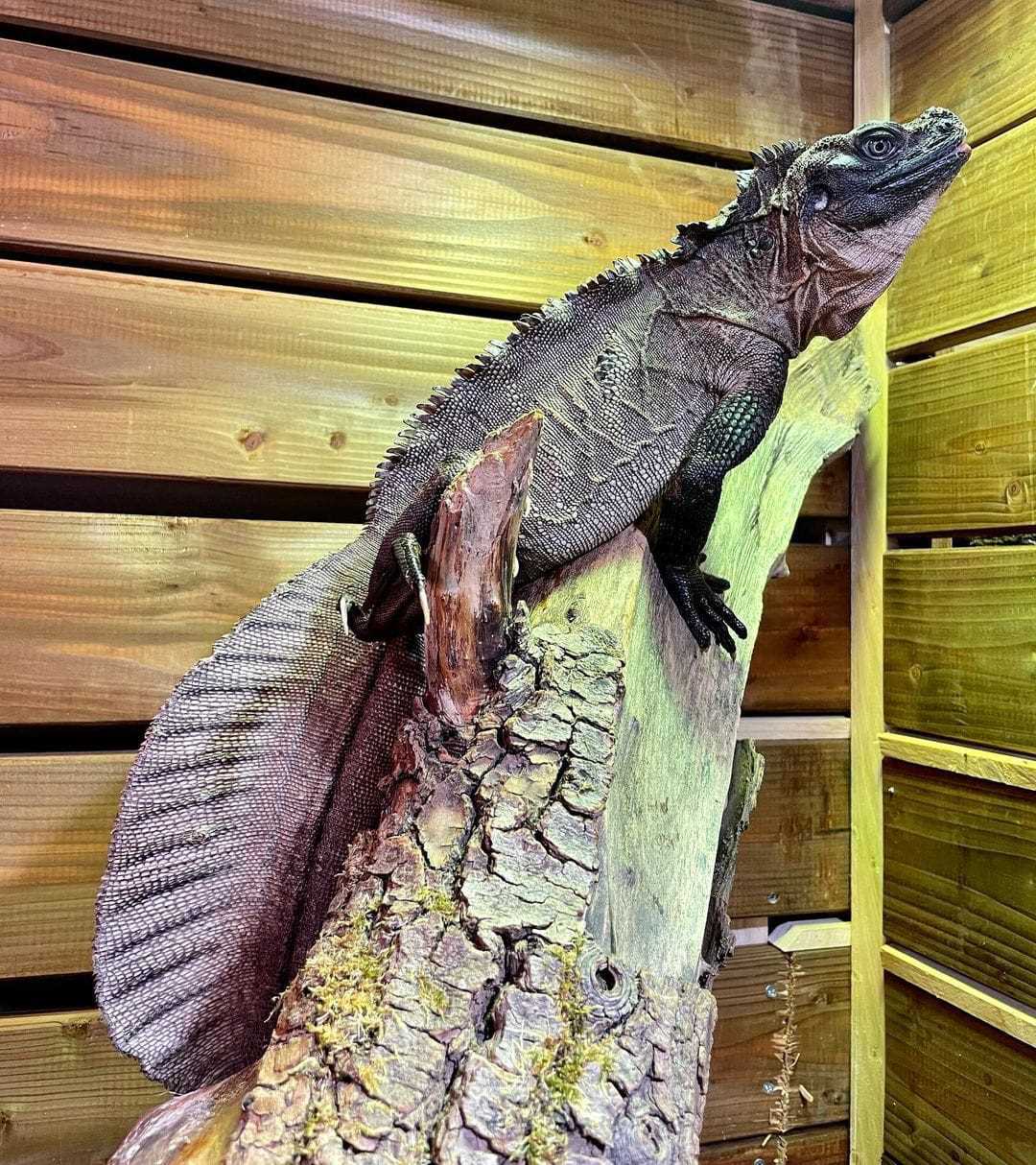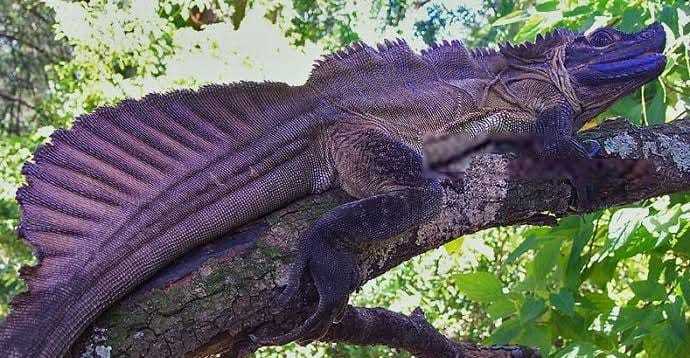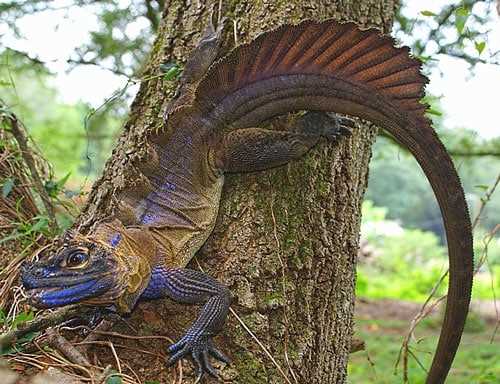
Dragons have long been a subject of myth, legend, and fascination. One particular species, the sailfin dragon, is a captivating creature that has captivated the imaginations of people around the world. While sailfin dragons are fairly large in their adult years, their size is only one of their many impressive features.
Caring for a full grown sailfin dragon is no small feat. These reptiles require a large, spacious enclosure that mimics their natural habitat. Additionally, it is crucial to maintain a high humidity level within the enclosure, as sailfin dragons are native to tropical regions. A diet rich in insects and fresh greens is vital to their overall health and well-being. Regular veterinary check-ups and a vigilant eye for any signs of illness are also essential in ensuring the sailfin dragon’s longevity and happiness.
Adult Sailfin Dragon Size
However, some exceptional individuals can reach lengths of up to 5 feet (1.5 meters). These magnificent creatures have elongated bodies and an intricate system of skin flaps along their back and tail, which gives them their unique sail-like appearance and name.
Despite their size, adult sailfin dragons are surprisingly light and agile. They have strong limbs and powerful claws that allow them to climb trees and rocks with ease. Their long, muscular tails help them maintain balance while maneuvering through their natural habitat.
Proper Sailfin Dragon Care

The proper care of a full-grown sailfin dragon is essential to ensure its health and well-being. These beautiful reptiles require specific conditions and attention to thrive in captivity.
Enclosure: A full-grown sailfin dragon needs a spacious and well-ventilated enclosure. It should have a minimum size of 6 feet long, 4 feet wide, and 4 feet tall. The enclosure should be made of sturdy materials like glass or plexiglass, with secure locking mechanisms to prevent escape.
Temperature and Lighting: Sailfin dragons require a temperature gradient within their enclosure. The basking area should have a temperature between 90-100°F (32-38°C), while the cool side should be around 75-85°F (24-29°C). A full-spectrum UVB light is essential for their proper calcium metabolism and overall health.
Substrate: The substrate at the bottom of the enclosure should be easy to clean and provide a naturalistic environment. Newspaper, reptile carpet, or tile are suitable options that prevent accidental ingestion and impactions.
Humidity: Sailfin dragons need a humidity level of 40-60%. You can maintain the necessary humidity by misting the enclosure daily and providing a large water dish for drinking and soaking.
Diet: A well-balanced diet is crucial for the healthy growth of a full-grown sailfin dragon. Their diet consists mainly of insects, such as crickets, mealworms, and waxworms. Additionally, leafy greens and vegetables should be offered regularly.
Conclusion
Full Grown Sailfin Dragon: Unique Appearance
The full grown sailfin dragon has a truly unique appearance that sets it apart from other reptiles. As its name suggests, one of its most distinctive features is the large sail-like fin that runs along its back. This sail is supported by long, bony spines that give the dragon a majestic and striking appearance.
Not only does the sailfin dragon have an impressive dorsal fin, but its body is also covered in rough scales that offer additional protection. These scales have a textured pattern that gives the dragon a beautifully intricate appearance. The coloration of the sailfin dragon can vary, but it often includes shades of green, yellow, and brown that help it blend into its natural environment.
In addition to its sail and scales, the sailfin dragon has a long, slender body with muscular limbs. It has sharp claws that are used for climbing and grasping objects. This unique combination of features allows the sailfin dragon to navigate its surroundings with ease and grace.
Another interesting aspect of the sailfin dragon’s appearance is its head. It has a triangular shape with large, expressive eyes that provide excellent vision. The dragon’s mouth is filled with sharp teeth, which it uses to consume its prey.
Overall, the full grown sailfin dragon is a visually stunning creature that captures the attention of all who see it. Its sail, scales, and intricate patterns make it a true marvel of nature.
Sailfin Dragon Equipment Essentials
Terrarium: A spacious terrarium is necessary to accommodate the impressive size of a full-grown Sailfin Dragon. Make sure the terrarium has enough space for the dragon to move around comfortably.
Heating and Lighting: Sailfin Dragons require specific temperature and lighting conditions to thrive. You will need a heat lamp to provide a basking area with temperatures between 90-100 degrees Fahrenheit. A UVB light is also necessary to help the dragon metabolize calcium properly.
Food and Water Dishes: Stainless steel or ceramic dishes are ideal for providing food and water for your sailfin dragon. They are easy to clean and won’t break easily.
Hideouts: Sailfin Dragons require places to hide and feel secure. Add several hiding spots, such as caves or cork bark, to the terrarium. This will give your dragon a sense of security and reduce stress.
Basking Perch: A basking perch is necessary for your sailfin dragon to get closer to the heat source. Make sure it is sturdy and large enough for your dragon to comfortably sit on.
Thermometer and Hygrometer: Monitoring the temperature and humidity levels in the terrarium is essential for your dragon’s well-being. Invest in a good-quality thermometer and hygrometer to ensure the conditions are within the proper range.
Cleaning Supplies: Regular cleaning and maintenance of the terrarium are necessary to keep your sailfin dragon healthy. Have a supply of reptile-safe disinfectants, paper towels, and brushes specifically designed for cleaning reptile enclosures.
By having all the essential equipment, you will be well-prepared to provide your full-grown sailfin dragon with a comfortable and thriving environment.
Feeding Full Grown Sailfin Dragons
Feeding a full grown sailfin dragon is an important aspect of their care and overall health. These dragons have specific dietary needs that must be met in order for them to thrive.
Sailfin dragons are omnivorous, meaning they eat both plant matter and protein. Their diet should consist of a variety of insects such as crickets, mealworms, and waxworms. Additionally, they can be fed small amounts of fruits and vegetables, such as leafy greens, carrots, and berries.
Feeding should occur once a day for full grown sailfin dragons. It is recommended to offer food in the morning so that they have time to digest before their nighttime sleep. Live prey should be dusted with calcium powder to ensure they are getting the required nutrients.
Interacting with Your Full Grown Sailfin Dragon

1. Provide a comfortable and secure environment: Before attempting any interaction, ensure that your sailfin dragon is in a calm and comfortable environment. This will help reduce stress and promote a more positive interaction.
3. Use gentle and slow movements: When approaching your sailfin dragon, make sure to move slowly and avoid any sudden movements or loud noises. This will help prevent startling or agitating your dragon.
4. Offer treats and rewards: To build trust and encourage positive interaction, offer your dragon treats such as live insects or small pieces of fruit. This will create a positive association with your presence and make the dragon more receptive to interaction.
6. Respect personal space: Just like humans, sailfin dragons have their own personal space. Respect their boundaries and avoid invading their personal space without a good reason.
8. Keep interactions short and positive: When interacting with your sailfin dragon, keep the sessions short and positive. This will help prevent boredom or stress and allow your dragon to gradually become more comfortable with your presence over time.

I’m Lena Adams—a product of an unconventional upbringing in the African wilderness. My father, a daring explorer of African wildlife, sparked my fascination with reptiles, a passion that intertwined with the tragic loss of my mother during an expedition, leaving an indelible mark on my life. Driven to understand the creatures that captivated my parents, I embarked on my journey, sharing insights about reptiles, frogs, and lizards on my website. Through my explorations and conservation efforts, I honour my family’s legacy while seeking connections—to the creatures, nature, and the mother whose presence I yearn to understand.
